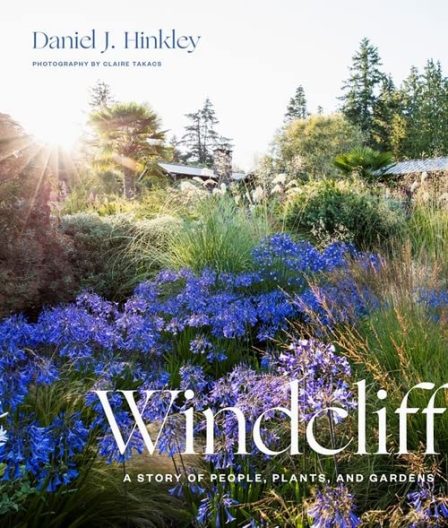 Dan Hinkley newest book, “Windcliff: A Story of People, Plants, and Gardens,” is largely about that garden, his residence of the last 20 years with his husband, Robert Jones. As hinted at in the sub-title, the book is also a memoir about Hinkley’s youth in a small, Michigan town and the world-wide network of friends and colleagues he has developed through horticulture and plant exploration.
Dan Hinkley newest book, “Windcliff: A Story of People, Plants, and Gardens,” is largely about that garden, his residence of the last 20 years with his husband, Robert Jones. As hinted at in the sub-title, the book is also a memoir about Hinkley’s youth in a small, Michigan town and the world-wide network of friends and colleagues he has developed through horticulture and plant exploration.
Windcliff is divided into several broad areas based on the types of plantings, and Hinkley uses these areas as a structure for the book. Both endpapers show a helpful plan of the property to help you keep track. Within each chapter, a series of essays explore specific plantings, design challenges and solutions, and an intimate view into the various successes and failures, often with correlations to the author’s personal life.
My impression of the book is shaped by a handful of visits I’ve made to Windcliff, with my most vivid memories being of the bluff. Not surprisingly, this is the centerpiece of the book. A large open space with vast views is very different from the garden at Heronswood where Hinkley and Jones lived previously. The design challenges were equally immense, but they pulled it off magnificently.
The photography of Claire Takacs well captures the feeling of the bluff and its plantings, while the writing explains the why and how those plantings in that space were achieved. I found the essays on the large grasses, the agapanthus, and other South African natives especially engaging.
While the bluff was an unqualified success, the meadow near the entry drive was not. As gardeners, the most fun is to read about another’s failures, especially by an eminent plantsperson such as Hinkley. In brief, he discovered that his deepest affinity is with woody plants, and so an arboretum of trees and shrubs, many found on his plant exploration trips, are gradually taking over the meadow.
Other setbacks, such as a neighbor’s large, ugly house on the property line, will also resonate with readers, but so will the re-discovery of the joys of a vegetable garden. Gardeners without vast acreage will find value in the extensive section on potted plants placed near the house. After reading that chapter, I will definitely try Eucomis in a container this year.
The area around the house is where the visions of Hinkley and architect Jones intersect. The give-and-take will amuse and inform couples that have a similar dynamic. Throughout the writing, Hinkley’s wry sense of humor and deep sensibilities of the emotional importance of gardens is very clear. “There are more approaches, more tricks to the trade, undoubtedly as many as there are good gardeners. Yet the yearning for beauty, whatever that may be, is the same. It is not intentional nor is it fully accidental. There is no endpoint or possession.”
Excerpted from the Spring 2021 issue of the Arboretum Bulletin